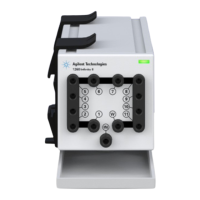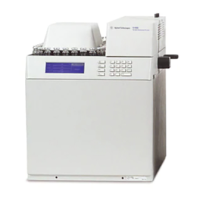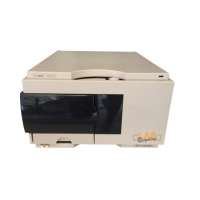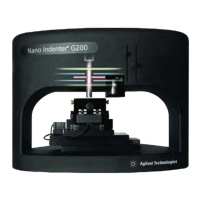1260 Infinity II Flexible Pump User Manual 63
3Using the Module
Solvent Information
• Chromatographic grade ethers, which can contain peroxides (for example,
THF, dioxane, diisopropylether). Such ethers should be filtered through dry
aluminium oxide which adsorbs the peroxides.
• Solutions of organic acids (acetic acid, formic acid, and so on) in organic
solvents. For example, a 1 % solution of acetic acid in methanol will attack
steel.
• Solutions containing strong complexing agents (for example, EDTA, ethylene
diamine tetra-acetic acid).
• Mixtures of carbon tetrachloride with isopropanol or THF.
Titanium (Ti)
Titanium is highly resistant to oxidizing acids (for example, nitric, perchloric and
hypochlorous acid) over a wide range of concentrations and temperatures. This
is due to a thin oxide layer on the surface, which is stabilized by oxidizing
compounds. Non-oxidizing acids (for example, hydrochloric, sulfuric and
phosphoric acid) can cause slight corrosion, which increases with acid
concentration and temperature. For example, the corrosion rate with 3 % HCl
(about pH 0.1) at room temperature is about 13 μm/year. At room temperature,
titanium is resistant to concentrations of about 5 % sulfuric acid (about pH 0.3).
Addition of nitric acid to hydrochloric or sulfuric acids significantly reduces
corrosion rates. Titanium is sensitive to acidic metal chlorides like FeCl
3
or CuCl
2
.
Titanium is subject to corrosion in anhydrous methanol, which can be avoided by
adding a small amount of water (about 3 %). Slight corrosion is possible with
ammonia > 10 %.
Diamond-Like Carbon (DLC)
Diamond-Like Carbon is inert to almost all common acids, bases and solvents.
There are no documented incompatibilities for HPLC applications.
Fused silica and Quartz (SiO
2
)
Fused silica is used in Max Light Cartridges. Quartz is used for classical flow cell
windows. It is inert against all common solvents and acids except hydrofluoric
acid and acidic solvents containing fluorides. It is corroded by strong bases and
should not be used above pH 12 at room temperature. The corrosion of flow cell
windows can negatively affect measurement results. For a pH greater than 12,
the use of flow cells with sapphire windows is recommended.

